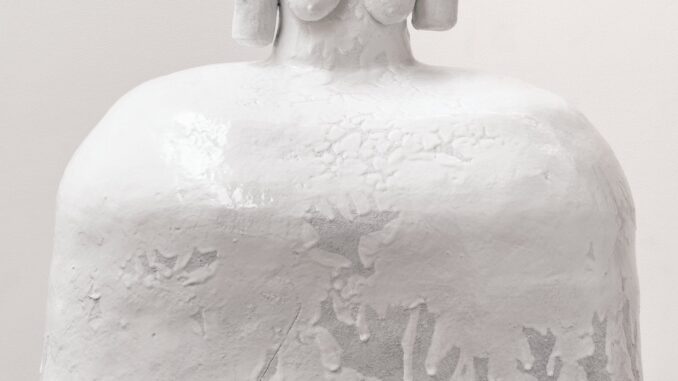
Poet Ama Codjoe paid a visit to Lewis & Clark on Monday, Feb. 5 as part of the English department’s Visiting Writer Series, and gave a reading of poems from her book, “The Bluest Nude.” Codjoe’s first published collection brings up themes of seeing oneself versus being seen, racial and gender stereotypes and identity of the self, all in the form of intricate poetry.
I went into this reading blind, unlike those in Poetry and English classes who had been reading her book in anticipation of her visit. Never having read her work before, I was glad I was able to hear it straight from her first.
Codjoe talked about her creative inspirations, her biggest being Toni Morrison. The collection’s title is a nod to Morrison’s critically acclaimed “The Bluest Eye,” which shares themes of race, femininity and sexuality with Codjoe’s collection. She was also inspired by “Posing Modernity: The Black Model From Manet and Matisse to Today,” an art exhibit curated by Denise Murrell.
The exhibit focuses on the use of Blackness in art as a way to contrast and elevate whiteness, and on how to counteract that stigma and comparison. It explores the legacy of Manet’s controversial painting “Olympia’’ as a model for the depiction of Black women in art. This exhibit sparked Codjoe’s interest in the negative stigmatization of the Black female body, especially in nakedness. She continued to explore that idea with her writing, and a lot of her poems deal with being seen, or seeing oneself, naked.
Codjoe is not only a fantastic poet but also a very interesting individual to talk to. She had a lot to say about the discovery of the self, and how that process is made difficult by the outside perspectives we internalize. She discussed the “mythologies,” or stereotypes, of race and gender and how they are used to “justify treating
people inequitably.”
Professor of English Mary Szybist introduced Codjoe’s reading with a quote from John Berger: “To be nude is to be seen naked by others and yet not recognized for oneself. It is to be on display … turned into a disguise.”
I asked Codjoe to specify her definitions of “naked” and “nude,” and what each meant. To her, nudity is being subject to the gaze of others, the “baggage” that is put onto the naked body, the social constructs and biases that are employed when being looked upon by a judgemental eye. These eyes are especially harsh on Black women, and stereotypes can “haunt.”
On the other hand, to be naked is to see oneself through an unbiased lens; it is what one makes of the self, and what the self makes of the physical body. To Codjoe, the biases that come from the outside eye are “impossible to untangle,” which is why seeing oneself in nakedness
is so important.
That takes care of the “Nude” part of her book title, but what about the blue? One student attending her reading asked the question,
“Why blue?”
“Blue is a mood, a tone, and an atmosphere,” Codjoe said in response. “It’s also music, the Blues.”
Several of her poems include mentions of the color, including “my blue was a habit” and “blue seeped out of me” in the first poem of her collection, “Blueprint.” Blue is more than a color to her; it is part of herself. Codjoe’s poems are beautiful and raw, and I cannot wait to read more
of her books.
Hearing an author read their own work aloud makes it truly come to life. If you are interested in experiencing a poetry or novel reading yourself, the English department is welcoming its final Visiting Writer of the school year, Claire Vaye Watkins, on Feb. 20 at 6 p.m. in Frank Manor House and I would highly recommend attending.
Subscribe to the Mossy Log Newsletter
Stay up to date with the goings-on at Lewis & Clark! Get the top stories or your favorite section delivered to your inbox whenever we release a new issue.

Leave a Reply